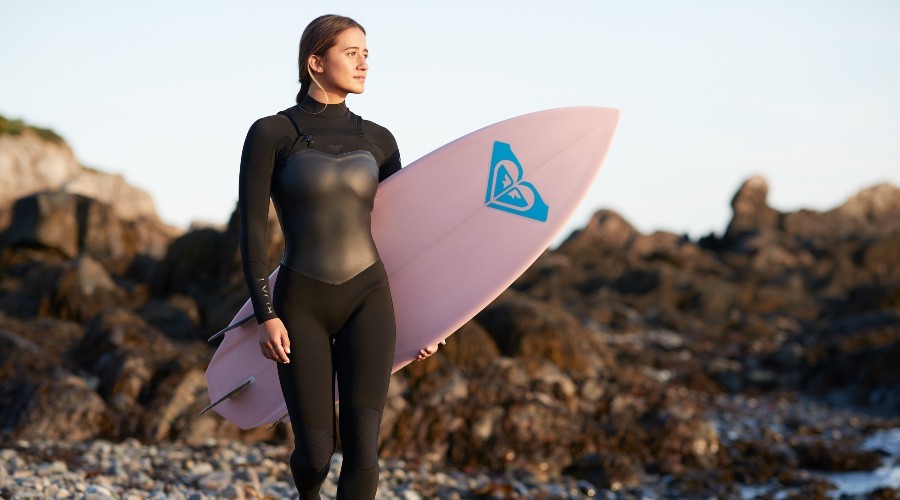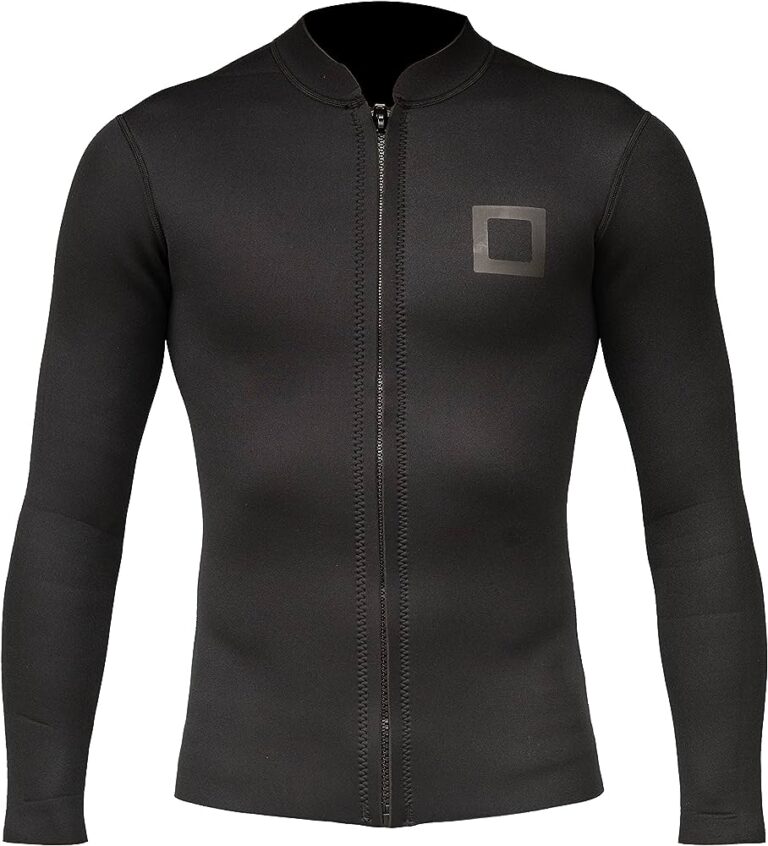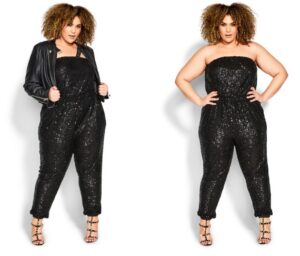To wear under a wetsuit, opt for a swimsuit or rash guard to provide comfort and protection. Wearing the right clothing under a wetsuit is essential to ensure comfort and protection while engaging in water activities.
The main objective is to choose a swimsuit or rash guard that provides a snug fit without causing discomfort or restriction of movement. These options offer a barrier between your skin and the wetsuit, preventing irritation and chafing. It is recommended to avoid cotton and opt for synthetic materials that wick away moisture and dry quickly.
Additionally, consider wearing neoprene socks or booties to provide insulation and protect your feet from the cold. By choosing the correct clothing to wear under your wetsuit, you can enhance your overall water experience and enjoy maximum comfort and performance.
1. Choosing The Right Base Layer
Choosing the right base layer is crucial when it comes to finding what to wear under a wetsuit. Consider the material of the base layer, as it plays a significant role in providing comfort and flexibility during water activities. Opt for a base layer that has moisture-wicking properties to keep you dry and prevent chafing. These materials effectively draw moisture away from the skin, allowing it to evaporate quickly.
Another important factor to consider is the proper fit and size of the base layer. It should fit snugly against your body without feeling restrictive. This ensures better insulation and improves the overall effectiveness of the wetsuit. Avoid base layers that are too loose or too tight, as they can interfere with your movement and reduce comfort.
2. The Role Of Thermal Layers
Thermal layers play a crucial role in enhancing insulation and comfort under a wetsuit and are available in various types. These layers provide an extra barrier against the cold water and help in maintaining body temperature, allowing you to stay warm and enjoy your water activities.
| Types of Thermal Layers |
|---|
| Neoprene Rash Guards |
| Hydroskins |
| Polypropylene Layers |
Neoprene rash guards are made from a synthetic rubber material that provides both insulation and flexibility. They are a popular choice for divers and surfers as they offer good warmth and protection against sunburn.
Hydroskins, on the other hand, are lightweight, quick-drying, and provide excellent insulation. They are designed to keep you warm even in the cold water, and their tight fit ensures minimal water flushing.
Polypropylene layers are an ideal choice for extreme cold conditions. They are highly effective in retaining body heat and wicking away moisture, keeping you dry and warm throughout your water activities.
3. Maximizing Comfort With Undergarments
The undergarments you choose to wear under your wetsuit can greatly impact your comfort and overall experience in the water. Maximizing comfort with undergarments is essential for an enjoyable day of aquatic activities. Undergarments serve a variety of purposes, but their primary importance lies in providing breathability and insulation. They help regulate body temperature, keeping you warm in cold waters and preventing overheating in warmer conditions.
There are various types of undergarments available to meet different needs and preferences. One popular option is full-length wetsuit liners, which provide an extra layer of insulation and help prevent chafing. Another choice is merino wool layers, known for their superior breathability and moisture-wicking properties. These layers are also naturally odor-resistant.
Alternatively, you can opt for synthetic underwear, which often features quick-drying and moisture-wicking capabilities. These undergarments are designed to keep you dry and comfortable during your water activities. Keep in mind that the choice of undergarments may depend on factors such as water temperature, personal preference, and the intended duration of your activities.
| Undergarment Type | Main Features |
|---|---|
| Full-Length Wetsuit Liners | Extra insulation, helps prevent chafing |
| Merino Wool Layers | Superior breathability, moisture-wicking, odor-resistant |
| Synthetic Underwear | Quick-drying, moisture-wicking |
Choosing the right undergarments is crucial for maximizing comfort when wearing a wetsuit. So, consider the water conditions and your personal preferences before making your selection.
4. Accessorizing For Extra Comfort
When it comes to wearing a wetsuit, it’s important to consider the accessories for extra comfort. Socks and booties are essential for protecting your feet and providing insulation. Look for neoprene socks and booties that are snug but not too tight, ensuring proper circulation. These accessories not only keep your feet warm but also prevent blisters and chafing.
Gloves and mitts are another crucial accessory to consider. They protect your hands from the cold water and offer enhanced grip. Neoprene gloves provide flexibility and insulation, while mitts provide extra warmth due to their enclosed design. Choose gloves or mitts that fit well and allow you to maintain dexterity for activities such as surfing or diving.
When it comes to headwear, hoods are the go-to option. Neoprene hoods keep your head and ears warm, protecting you from the chilling effects of the water. Look for a hood that fits snugly around your head and seals properly to prevent water entry. Some hoods even come with adjustable straps for a customizable fit.
5. Proper Fit And Layering Techniques
Avoiding Bulkiness And TightnessWhen wearing a wetsuit, achieving a proper fit and using the right layering techniques is essential. Bulky or tight clothing underneath can affect both comfort and flexibility in the water. To avoid bulkiness, choose thin and form-fitting base layers such as rash guards or swimsuits. These help to minimize added bulk while providing a comfortable base for the wetsuit. Layering order is crucial to prevent overheating or feeling constricted. Start with a base layer, then add insulation layers if needed, such as neoprene shorts or tops. Choose high-quality materials that provide insulation without adding too much thickness. Testing for freedom of movement is an important step to ensure a proper fit. Put on the wetsuit and move your arms, legs, and torso in different directions to check for any restrictions or discomfort. It’s crucial to have unrestricted movement to swim and surf comfortably. Adjust the layers or opt for different clothing if needed, until you find the perfect balance between warmth, flexibility, and comfort. |
6. Maintaining Hygiene And Care
|
Washing Undergarments Properly
To maintain proper hygiene when wearing a wetsuit, it is essential to wash your undergarments after each use. Use a mild detergent and lukewarm water when hand-washing, ensuring that the cleanser is thoroughly rinsed out. Avoid using harsh chemicals or bleaching agents, as they can damage the fabric. If machine-washing is preferred, use a gentle cycle and place the undergarments in a separate mesh bag to prevent tangling. |
|
Drying Techniques
After washing, squeeze out excess water gently and avoid wringing the undergarments to prevent stretching or damage. Lay them flat on a clean, absorbent towel and roll it up to remove additional moisture. Hang the under layers in a cool, well-ventilated area away from direct sunlight to dry naturally; this helps maintain the fabric’s integrity. |
|
Storing Under Layers Safely
Proper storage of under layers is crucial for maintaining their quality and longevity. Ensure they are completely dry before folding or rolling them neatly to avoid creasing. Store them in a cool, dry place away from any direct heat sources or exposure to sunlight. Consider using a dedicated storage bag or drawer to keep them separated from other items and protected from dust and moisture. |
7. Overcoming Common Challenges
Overcoming Common Challenges
Dealing with Chafing and Irritation:
Chafing and irritation can be major issues when wearing a wetsuit, but there are ways to minimize discomfort. First, make sure to wear a rash guard or a thin layer of neoprene underneath your wetsuit. This will provide an extra barrier between your skin and the wetsuit material, reducing friction and potential chafing. Additionally, applying a lubricant or petroleum jelly to areas prone to chafing, such as the neck, underarms, and inner thighs, can help prevent irritation.
Addressing Sensitive Skin Issues:
If you have sensitive skin, it’s crucial to choose the right materials for your base layer. Opt for hypoallergenic fabrics that are gentle on the skin, such as merino wool or bamboo. These natural materials are breathable, moisture-wicking, and less likely to cause irritation. Be sure to wash your base layer with a mild, fragrance-free detergent to further reduce the risk of skin reactions.
Minimizing Odor Buildup:
Bacteria and sweat can lead to unpleasant odor buildup inside a wetsuit. To combat this issue, always rinse your wetsuit thoroughly with fresh water after each use. Hang it in a well-ventilated area to dry completely before storing. Periodically using a wetsuit cleaner or a mixture of vinegar and water can also help eliminate odors and keep your wetsuit smelling fresh.

Credit: roxy.com
8. Layering Tips For Different Water Temperatures
html
8. Layering Tips for Different Water Temperatures
Subheading: Cold Water Layering Strategies
In cold water, it’s crucial to properly layer your clothing under a wetsuit to stay warm and comfortable. Start with a moisture-wicking base layer to draw sweat away from your body. Add a thermal layer for insulation, such as a neoprene rash guard or a thin wetsuit. To enhance warmth, consider wearing a hood and gloves designed specifically for cold water activities. These additional accessories will help reduce heat loss from your head and hands.
Subheading: Moderately Cold Water Considerations
In moderately cold water, you may opt for a thinner base layer or skip it altogether. Consider wearing a thicker neoprene wetsuit to provide both insulation and protection from the elements. You can also add a vest or jacket to trap more heat near your core. Remember to choose wetsuit accessories appropriate for the water temperature and your personal comfort level.
Subheading: Warm Water Layering Techniques
In warm water conditions, layering is less essential for temperature regulation but still offers benefits. Wear a lightweight rash guard or a swim shirt to protect your skin from chafing and the sun’s rays. Consider adding a pair of board shorts or a neoprene pair of leggings for extra protection and coverage. Keeping your skin protected and comfortable will enhance your overall water experience.
9. Essential Tips For Layering Under A Wetsuit
Start with a clean and dry body. Before layering under your wetsuit, ensure that your body is clean and dry. Use a gentle soap and thoroughly rinse off any dirt, oils, or lotions that can reduce the effectiveness of your layers.
Avoid cotton materials. Cotton absorbs and retains moisture, so wearing cotton under a wetsuit can make you feel damp, cold, and uncomfortable. Instead, opt for synthetic materials such as polyester or polypropylene that wick away moisture and keep you warm.
Invest in quality gear. Choosing the right base layers and thermal garments is crucial for staying warm and comfortable in the water. Look for gear specifically designed for water sports, such as neoprene tops, rash guards, or dive skins, that provide insulation and help regulate your body temperature.
10. Faqs About Wearing Layers Under A Wetsuit
Can I wear jeans under a wetsuit?
Wearing jeans under a wetsuit is not recommended. Denim is a thick fabric that absorbs water, making it heavy and uncomfortable when wet. It may also restrict your movement and hinder your overall experience while swimming or engaging in water activities. It is best to choose appropriate swimwear or neoprene gear specifically designed for water sports.
Should I wear a sports bra under a wetsuit?
Wearing a sports bra under a wetsuit depends on personal preference. Some women prefer the added support and comfort that a sports bra provides, while others may find it unnecessary. If you feel more comfortable wearing a sports bra, make sure it is made from moisture-wicking materials that will not retain water and become heavy.
Do I need to wear a base layer in warm water?
Wearing a base layer under a wetsuit is not typically necessary in warm water conditions. However, a base layer can provide additional insulation and protection against chafing, so if you prefer added comfort or plan to spend extended periods in the water, it can be beneficial. Opt for lightweight and breathable fabrics such as nylon or polyester to prevent overheating.
Frequently Asked Questions Of What To Wear Under A Wetsuit
Are You Supposed To Wear Anything Under A Wetsuit?
Yes, it is recommended to wear something under a wetsuit for hygiene and added comfort. Most people wear a swimsuit or rash guard to avoid direct contact and protect the wetsuit from body oils and sweat.
What Do Most People Wear Under A Wetsuit?
Most people wear a swimsuit or rash guard under a wetsuit for comfort and protection from chafing.
Do Your Clothes Get Wet Under A Wetsuit?
No, your clothes don’t get wet under a wetsuit. The wetsuit forms a waterproof barrier that prevents water from seeping in.
Can You Wear Something Under A Wetsuit To Stay Warm?
Yes, wearing something under a wetsuit can help keep you warm. It adds a layer of insulation, trapping body heat. Consider wearing a rash guard or wetsuit undergarments made of neoprene for added warmth and comfort.
Conclusion
To keep yourself comfortable and protected while wearing a wetsuit, choosing the right attire underneath is crucial. Opt for moisture-wicking, snug-fitting garments that prevent chafing and maintain your body temperature in water. Neoprene rash guards, swimwear, and board shorts are ideal options to consider.
By following these tips, you’ll be able to enjoy your water activities to the fullest without any discomfort or irritation. Stay safe and happy exploring!





